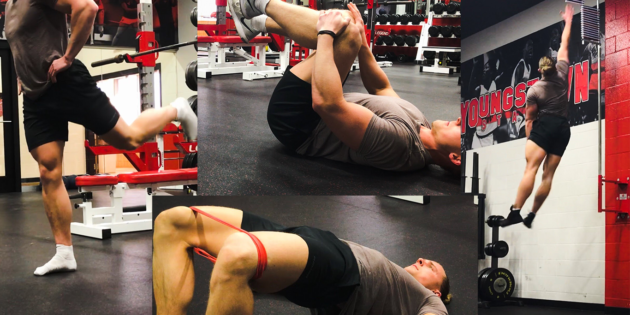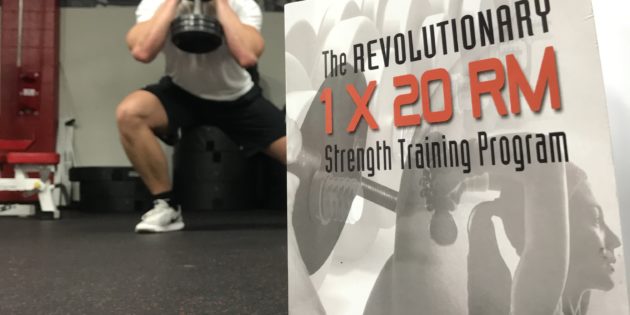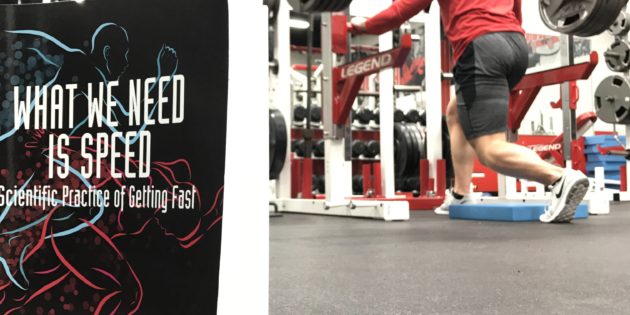How to Get Fast Twitch Muscle: Rest

Humans have two basic types of muscle fibers – Type I (Slow twitch) and Type II (Fast Twitch). Type II fibers are further separated into Type IIa (producing high power/fast twitch) and Type IIx (producing the highest power/fastest twitch). If you want to jump higher, sprint faster, and be overall more explosive, you need to:…
JACKEDTHLETE – High Frequency Training

JACKED [jakt] adjective – (of a person) having very well-developed muscles. ATHLETE [ˈaTHˌlēt] noun – a person who is proficient in sports and other forms of physical exercise. JACKEDTHLETE is meant for competitive athletes desiring both the physical development to compete at a high level (strength, explosiveness, etc.) paired with juicy muscularity (“look good to…
How to Jump Higher: Accentuated Eccentrics

Holding weight in the hands and dropping it before going upwards in a jump is known as Accentuated Eccentric Loading. Compared to normal body weight jumping, this method proves to be more effective. Short-term: In elite male volleyball players, block jumps were performed at Body Weight and with a 20kg eccentric load. The body weight jumps were…
How to Jump Higher: Ankle Dorsiflexion

Bad ankles can decrease your vertical jump. You can have a strong and powerful hip, but ultimately force has to travel through the ankle. The ankle muscles contribute significantly to jump height [1], but they also ‘link’ hip and knee extension into the ground. Normal energy transfer and biomechanics are a product of decent levels…
Instantly Jump Higher and Lift Heavier: Post-Activation Potentiation

Potentiation. Noun. The increase in strength of nerve impulses along pathways that have been used previously, either short-term or long-term. You spend months trying to jump higher and increase strength numbers. What if you could be stronger and more explosive every time you entered the gym? Enter Post-Activation Potentiation (PAP): PAP is the phenomenon by which…
How to Jump Higher: Study – Pelvic Adjustment

In training, it’s always difficult to find the reason why a certain program was effective or ineffective. This is because we don’t live in a vacuum. We are permeable membranes. Stress, lifestyle, recovery, and a hundred other things affect our results from the gym. Maybe the reason you didn’t get stronger or jump higher was because of…
How to Jump Higher: 3 Things I Learned Gaining 3.5 Inches on my Vertical Jump in 10 Days

Over the last 10 days, I saw these results: Standing Jump from 31.5 inches to 34.5 inches (+3.0 inches) Approach Jump from 34 inches to 37.5 inches (+3.5 inches) Here are some things I learned: 1) You Should Be Doing Band Assisted Jumps Video: Research: Study here, here, here, and here showing that assisted jump training is effective at improving jumping ability. Sidenote: You may not even have…
20 Takeaways: Strength Training and Coordination: An Integrative Approach

My key points from “Strength Training and Coordination: An Integrative Approach” by Frans Bosch: 1. Coordination must be taken into account during strength training “Most literature about strength training is highly mechanical in its approach, and Isaac Newton seems to have contributed more to strength training theory than all the neurophysiologists in history.” “Coordination at…
10 Takeaways: The 1×20 Method

My key points from “The Revolutionary 1 x 20 RM Strength Training Program” by Dr. Michael Yessis: 1. The 1×20 Method is effective for youth or beginner athletes. The body adapts more readily to lower intensity strength exercises (greater growth and development of the muscles, joints, and support structures without fatigue and chance of injury).…
10 Takeaways: What We Need is Speed

My key points from “What We Need is Speed: Scientific Practice of Getting Fast” by Henk Kraaijenhof: 1. “Try to find the right program for your athlete, not the right athlete for your program.” “Some athlete’s superfood might be other athlete’s poison.” 2. Sprint performance depends on the T-factors: Talent (genetic predisposition), Training, Temperature (need…


